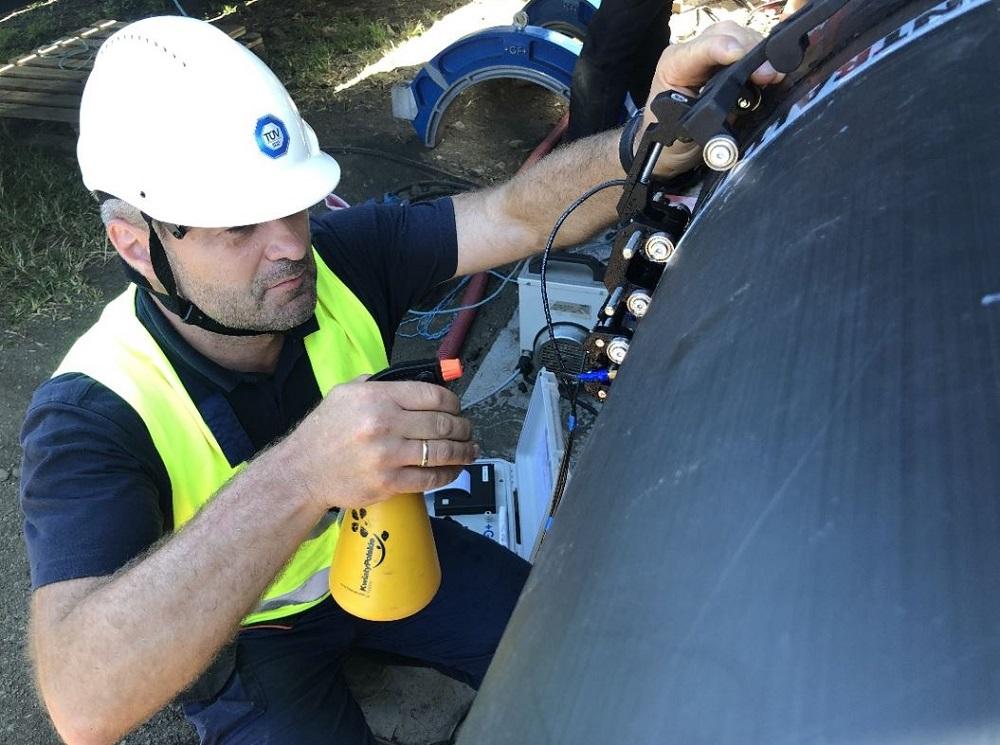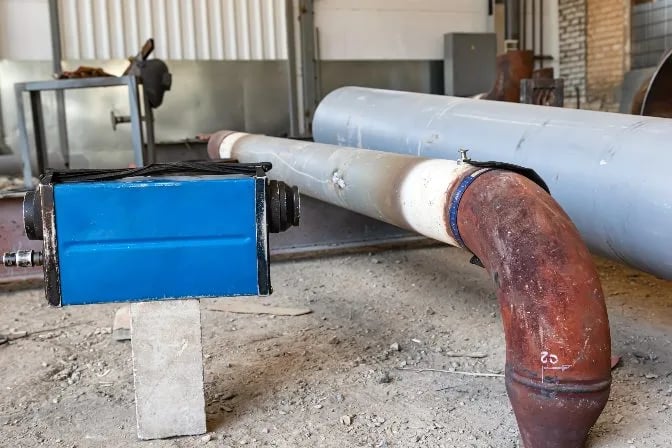Ensuring Safety and Precision in Pipe Welding Evaluation
In the realm of pipeline welding evaluation, guaranteeing security and precision are vital goals that require careful focus. The honesty of pipes pivots on the high quality of welds, making the assessment procedure an essential facet of upkeep and building and construction.
Relevance of Pipe Welding Assessment
Pipe welding inspection is crucial for ensuring the integrity and safety of the framework - Pipeline Welding Inspection. Bonded pipes are an important element of different industries, consisting of oil and gas, water transport, and chemical handling. The high quality of welds directly influences the architectural stability and longevity of the pipes. Via thorough assessment, prospective defects, such as splits, insufficient penetration, or misalignments, can be detected and fixed prior to they cause devastating failures.
Correct evaluation techniques, such as aesthetic testing, radiographic testing, ultrasonic screening, and magnetic particle testing, are used to examine the quality of welds. These techniques help make sure that welds meet market criteria and regulative needs. By identifying and resolving defects early in the welding procedure, the threat of leaks, tears, and ecological contamination is considerably lowered.
Furthermore, pipeline welding examination plays a crucial function in maintaining conformity with security requirements and regulations. Normal assessments not only boost the architectural integrity of pipes however also add to the general safety of procedures and workers functioning in the area. Essentially, spending in comprehensive pipe welding assessment is a proactive measure to avoid costly repair services, reduce threats, and maintain the reliability of important infrastructure.
Advanced Examination Technologies
Using sophisticated innovations in examination improves the accuracy and efficiency of examining weld quality in pipelines. Advanced examination technologies play a critical role in making sure the honesty and security of pipe systems. Among the most popular innovations in pipeline welding evaluation is using automated ultrasonic screening (AUT) AUT enables a much more detailed and accurate examination of welds by utilizing robotic systems to do examinations with high precision, decreasing the danger of human mistake.
Additionally, the application of phased variety ultrasonic screening (PAUT) has actually reinvented the examination process by offering comprehensive imaging of welds in real-time. PAUT provides much better problem detection abilities and enables quick data evaluation, making it possible for assessors to make enlightened choices immediately - Pipeline Welding Inspection. Furthermore, digital radiography (DR) has become increasingly preferred in pipe welding assessment because of its capability to produce top quality images that boost flaw exposure while reducing radiation exposure
Including these sophisticated evaluation technologies not only boosts the high quality of weld evaluations yet additionally improves overall safety and security requirements in pipeline building and construction and upkeep.

Function of Trained Examination Professionals
The assimilation of sophisticated assessment innovations in pipe welding assessment underscores the critical relevance of skilled assessment professionals in making certain the precision and reliability of analyses. Educated evaluation specialists play an essential role in looking after the application read what he said of these technologies, analyzing the data gotten, and making informed choices based on their knowledge.
These experts are equipped with the needed knowledge and skills to perform extensive examinations, determine possible defects or abnormalities in welds, and make certain compliance with market criteria and policies. Their capacity to analyze data, acknowledge patterns, and troubleshoot concerns is vital in keeping the honesty and safety of the pipe framework.
Moreover, qualified assessment specialists work as an important web link in between technology and functional application. By leveraging their experience and training, they can provide valuable understandings, recommendations, and remedies to optimize the welding procedure and minimize risks successfully.
Safety And Security Measures in Welding Inspection
Effective execution of safety and security steps in welding evaluation is paramount to making certain the security of personnel and the honesty of the facilities. Personnel entailed in welding evaluation must put on suitable get redirected here individual safety equipment (PPE) such as headgears, gloves, safety and security glasses, and fire-resistant clothing to lessen the risk of injuries.
Normal safety training sessions need to be carried out to enlighten evaluation professionals on the most current safety treatments and protocols. It is imperative to have emergency situation response plans in position to deal with any go right here unanticipated incidents immediately. Inspectors must be watchful in evaluating the welding equipment consistently to determine any kind of potential security threats. By prioritizing security actions in welding assessment, companies can produce a secure workplace and support the top quality and reliability of pipeline facilities.
Ensuring Accuracy in Assessment Practices
With an emphasis on careful focus to information, accomplishing accuracy in evaluation methods is vital for making sure the high quality and stability of pipeline welding. Precision in inspection practices entails sticking to rigid requirements and guidelines to accurately assess the welds for any issues or blemishes. Using sophisticated inspection technologies such as ultrasonic screening, radiographic screening, and visual inspection approaches is vital in determining even the tiniest defects that can jeopardize the security and functionality of the pipe.
Making sure precision in examination methods also calls for trained and competent inspectors that have a deep understanding of welding processes, products, and industry laws. These examiners must have the ability to translate inspection outcomes accurately and make educated decisions pertaining to the acceptance or denial of welds based on predefined requirements.
Regular calibration and maintenance of inspection devices are extremely important to ensuring the integrity and accuracy of assessment results. By maintaining high criteria of precision in assessment practices, stakeholders can believe in the architectural integrity and efficiency of pipe welds, ultimately contributing to the total safety and effectiveness of the pipe system.
Conclusion
To conclude, the value of pipe welding inspection can not be overemphasized. Advanced inspection innovations and skilled inspection professionals play a critical role in guaranteeing security and accuracy in welding techniques. By following strict precaution and keeping accuracy in inspection procedures, the integrity of pipelines can be supported, securing versus possible threats and making certain the proceeded efficiency of the system.

Using advanced evaluation technologies such as ultrasonic testing, radiographic screening, and aesthetic assessment techniques is critical in identifying even the tiniest imperfections that can jeopardize the security and functionality of the pipe.
Advanced examination innovations and skilled evaluation professionals play a crucial role in ensuring safety and security and precision in welding practices.